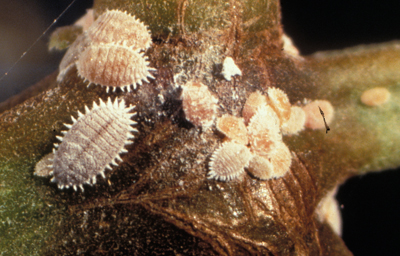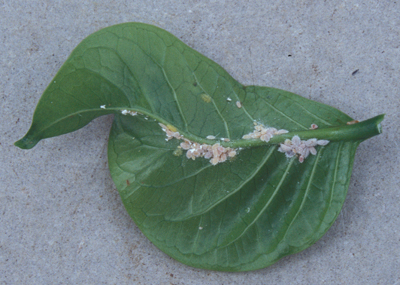Mealybugs
July 2, 2015
Sucking pests
Mealybugs feed on plant sap with their piercing-sucking mouthparts. Heavy infestations of mealybugs on plants can result in leaf yellowing, leaf drop, plant wilting and stunting. Mealybugs also produce large quantities of honeydew, a clear, sticky liquid, which serves as an ideal growing medium for black sooty mold fungi.

Mealybugs are 3 to 6 mm long, orange-pink when young. Mature adults look like cottony white flecks with fringe of waxy filaments surrounding the body.
Management
Dispose of heavily infested plants immediately. Contact insecticides may be used, but sprays must be applied when crawlers are present because once the later instars have developed the waxy coating, contact insecticides are less effective. Systemic insecticides typically need to be applied before mealybugs are present.

Mealybugs usually feed in leaf and stem axils and along leaf veins.
Print a PDF of this page: Mealybugs



 Print
Print Email
Email



